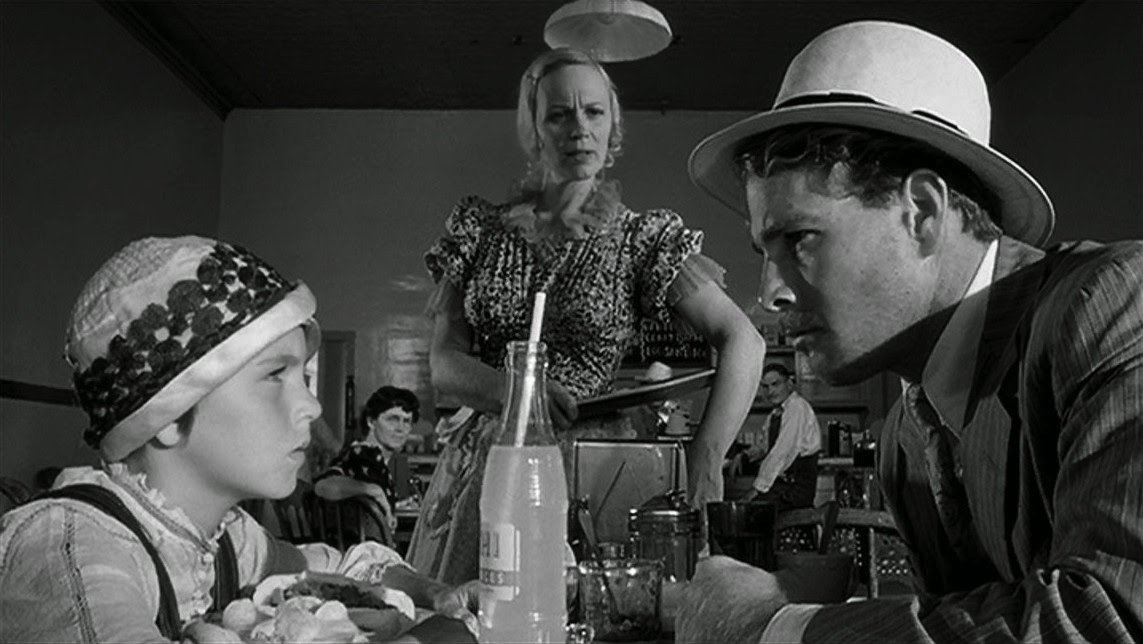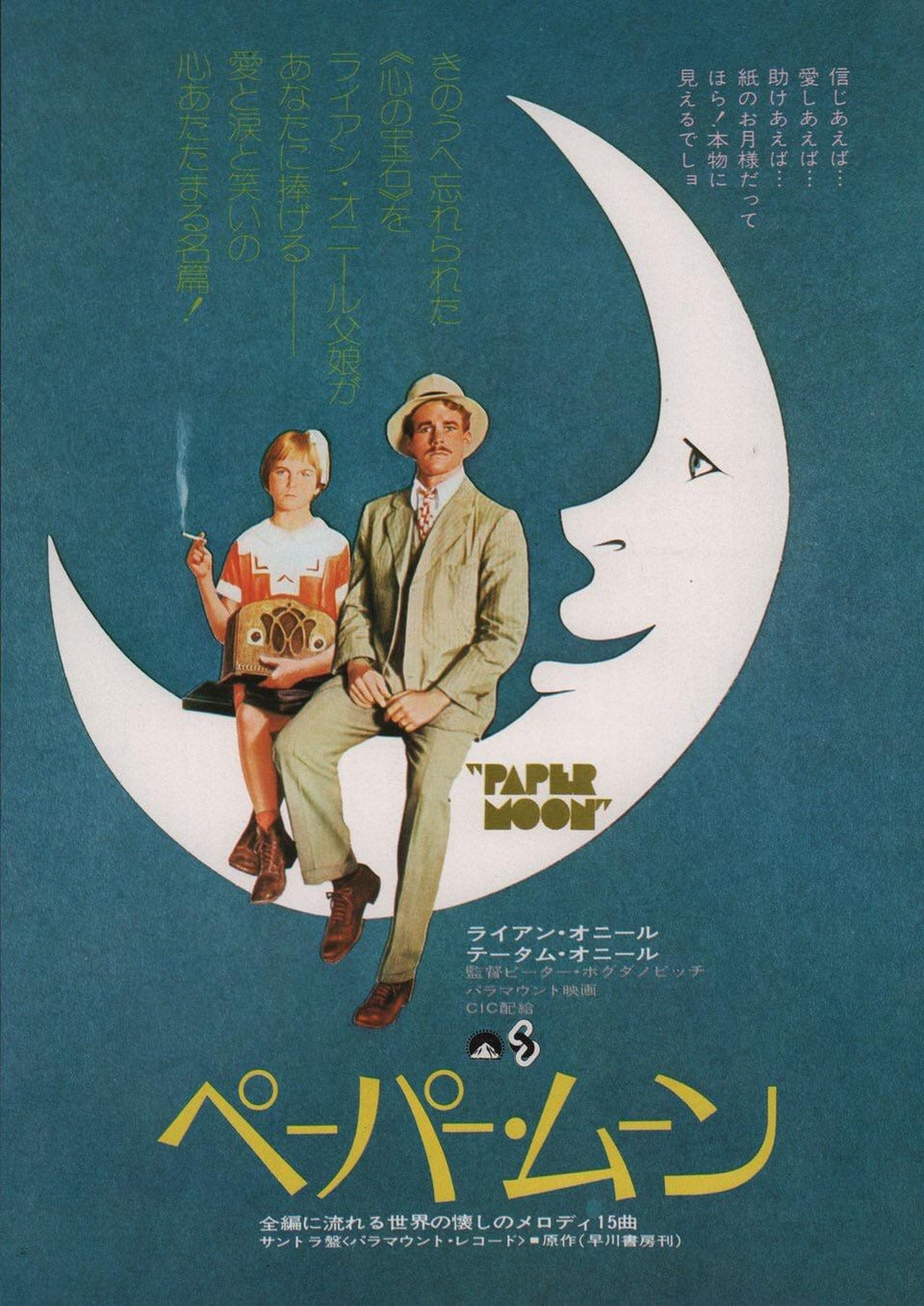


Addie hides their money in her hat, steals back the key to their car, and the pair escape. Unfortunately, the bootlegger's twin brother is the local sheriff, and he quickly arrests Addie and Moze.
#PAPER MOON FULL#
While staying at another hotel in a rural area, Moze uncovers a bootlegger's store full of whiskey, steals some of it, and sells it back to the bootlegger. Moze promptly leaves Miss Trixie and Imogene behind, while Addie leaves Imogene enough money to pay for her own passage home. Addie then sends Moze up to Trixie's room, where he discovers the clerk and Trixie having sex. They convince a clerk at the hotel where the group is staying to visit Trixie. When Addie subsequently discovers that Moze has spent their money on a brand-new Model 68 convertible to impress Miss Trixie, she and Imogene devise a plan. Imogene reveals that Trixie works, at least occasionally, as a prostitute, and it is suggested she has a venereal disease causing her a frequent need to urinate. Addie soon becomes friends with Imogene and becomes jealous of Trixie. Much to Addie's chagrin, Moze invites "Miss Trixie"-and her downtrodden African American teenage maid, Imogene-to join Addie and him. One night, Addie and "Moze" (as Addie addresses him) stop at a local carnival, where Moze becomes enthralled with an "exotic dancer" named Miss Trixie Delight and leaves Addie at a photo booth to have her photograph taken alone (of herself sitting on a crescent moon, to suggest the film's title). As time passes, Moses and Addie become a formidable team. Addie joins the scam, pretending she is his daughter, and exhibits a talent for confidence tricks, such as selling Bibles and the quick change scam. Thereafter, Moses visits recently widowed women, pretending to have previously sold expensive, personalized Bibles to their deceased husbands, and the widows pay him for the Bibles inscribed with their names. Addie overhears this conversation and, after Moses spends nearly half the money fixing his old Model A convertible and buying her a train ticket, she demands the money as rightfully hers, whereupon Moses agrees to let Addie travel with him until he has raised back the full $200 to give to her. Joseph, Missouri.Īt a local grain mill, Moses convinces the brother of the man who accidentally killed Addie's mother to give him $200 for the newly orphaned Addie. He denies this, but agrees to deliver the orphaned Addie to her aunt's home in St.

In Gorham, Kansas, circa 1936, itinerant con man Moses Pray meets nine-year-old Addie Loggins at her mother's graveside service, where the neighbors suspect he is Addie's father. Tatum O'Neal received widespread praise from critics for her performance as Addie, earning her the Academy Award for Best Supporting Actress, making her the youngest competitive winner in the history of the Academy Awards. It stars the real-life father and daughter pairing of Ryan and Tatum O'Neal as protagonists Moze and Addie.

The film, shot in black-and-white, is set in Kansas and Missouri during the Great Depression. Screenwriter Alvin Sargent adapted the script from the 1971 novel Addie Pray by Joe David Brown. Tatum O'Neal won the Oscar for this at-times both heartless AND heartfelt romp, but Paper Moon truly is Bogdanovich's show, staking a phenomenal follow-up to The Last Picture Show.Paper Moon is a 1973 American road comedy-drama film directed by Peter Bogdanovich and released by Paramount Pictures. In this PG-rated Great Depression-set dramedy, a con man (Ryan O'Neal) finds himself saddled with a young girl (Tatum O'Neal) who may or may not be his daughter and the two forge an unlikely partnership. But then, it dares to channel 1970s sensibilities like foul language and talk of women's problems. From Lazslo Kovacs' ace black and white cinematography to set designer Polly Platt's period detail to the choice of soundtrack (everything from The Jack Benny Program to the vintage tune "Paper Moon" fills your ears), the film feels as rooted in the Dust Bowl era as John Steinbeck. In real life, former film critic Bogdanovich befriended and interviewed every lionized director from George Cukor (The Philadelphia Story) to Howard Hawks (Bringing Up Baby) to Leo McCarey (Duck Soup). The director's deep-seated appreciation for classic American cinema shines throughout, perhaps even more so than with his '30s screwball love letter What's Up Doc. Getting the much-deserved Blu Ray treatment, Peter Bogdanovich's 1930s throwback and kiss to the Golden Age of H'Wood deserves even more acclaim in the wake of The Artist's "Best Picture" win in 2012.


 0 kommentar(er)
0 kommentar(er)
